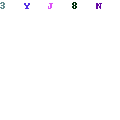Post by account_disabled on Feb 19, 2024 8:06:50 GMT
If your site is compatible with multiple devices such as PCs, smartphones, and feature phones, there are two points to be especially careful about. Vary HTTP header Annotation settings It is not necessarily necessary to implement all of these, and what is required differs depending on the provision format of the site for each device. We will introduce the contents of each item. Vary HTTP header Roughly speaking, the VaryHTTP header is an HTTP header that indicates information such as ``The content of this page (URL) varies depending on ◯◯'' when returning content from the server. In reality, it is likely that content will be sorted by user agent in most cases, so I will introduce an example of this setting. (When using Apache's mod_header) Header set Vary User-Agent Please add it to Apache configuration file or.
If a "Header set Vary" setting already exists, it can be concatenated telephone number list with a comma. Header set Vary Accept-Encoding, User-Agent By configuring this setting, you can be notified of the information that ``The content of this page (URL) changes depending on the user agent.'' Annotation settings This is something I briefly touched on in the previous article. Annotations that should be set on smartphone sites include information such as ``The smartphone version of this page (URL) is here, Set this description on the PC site, and set the PC site as canonical on the feature phone site, just like for smartphones. In other words, each connection is as shown below, with the PC site as the official version and others associated.

Associated with PC site Implementation on site There are three main types of smartphone site formats. Please refer to this previous article , which summarizes the settings required for each pattern. Here we will introduce cases where these formats are mixed or irregular on a site. Only the top page has a responsive web design, and all other pages are dynamically delivered. In this case, you need to configure the appropriate settings for each page. Top page (responsive web design) Setting the Vary HTTP header is not required. If it is set, please delete it. Also, there is no need to set annotations. Please allow GoogleBot to crawl all CSS and JavaScript images used on the page. This lets crawlers know that your page has a responsive web design.
If a "Header set Vary" setting already exists, it can be concatenated telephone number list with a comma. Header set Vary Accept-Encoding, User-Agent By configuring this setting, you can be notified of the information that ``The content of this page (URL) changes depending on the user agent.'' Annotation settings This is something I briefly touched on in the previous article. Annotations that should be set on smartphone sites include information such as ``The smartphone version of this page (URL) is here, Set this description on the PC site, and set the PC site as canonical on the feature phone site, just like for smartphones. In other words, each connection is as shown below, with the PC site as the official version and others associated.

Associated with PC site Implementation on site There are three main types of smartphone site formats. Please refer to this previous article , which summarizes the settings required for each pattern. Here we will introduce cases where these formats are mixed or irregular on a site. Only the top page has a responsive web design, and all other pages are dynamically delivered. In this case, you need to configure the appropriate settings for each page. Top page (responsive web design) Setting the Vary HTTP header is not required. If it is set, please delete it. Also, there is no need to set annotations. Please allow GoogleBot to crawl all CSS and JavaScript images used on the page. This lets crawlers know that your page has a responsive web design.
